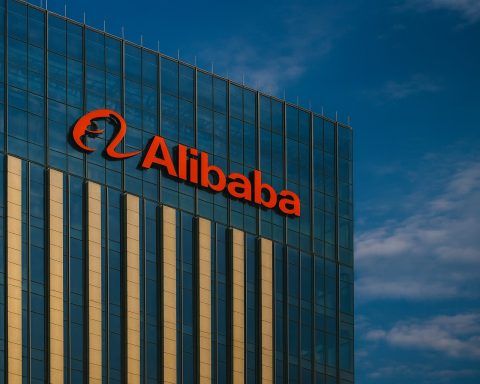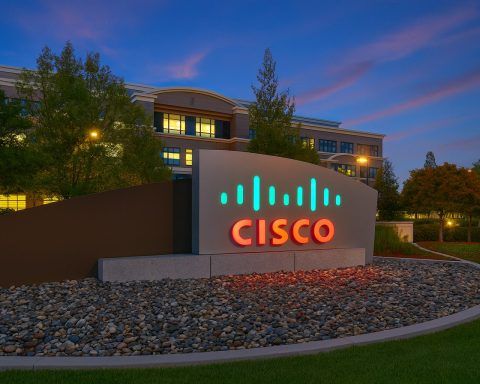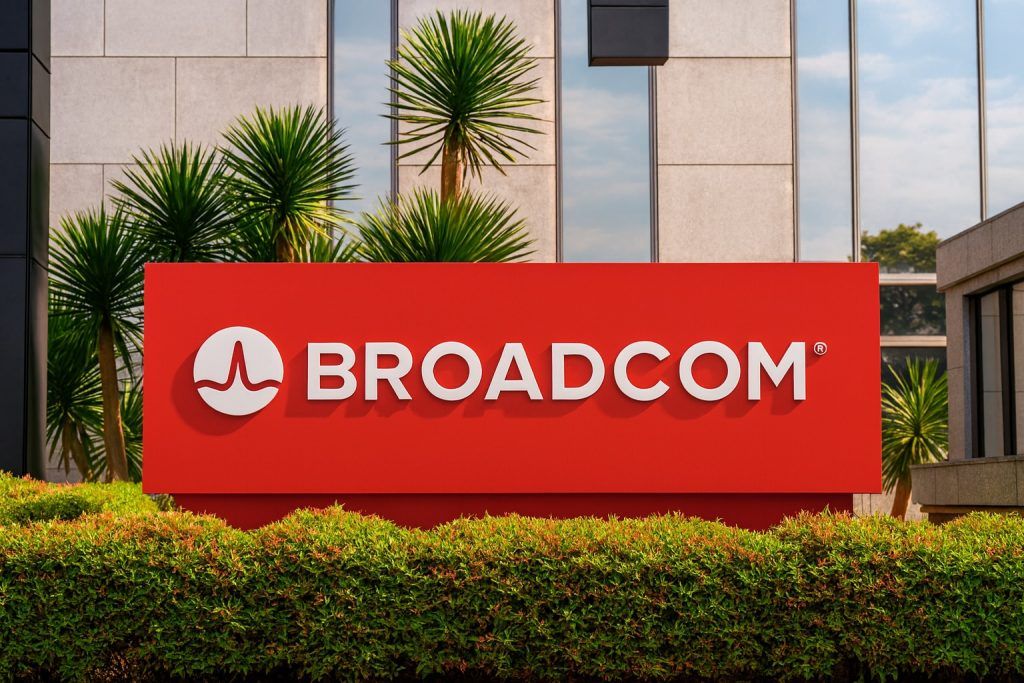Nvidia’s stock (NASDAQ: NVDA) bounced back on Friday after a bruising tech selloff, closing higher as Wall Street refocused on the chip giant’s crucial earnings report next week and digested fresh headlines on export controls, internal software challenges, and new AI infrastructure bets.
Key Takeaways for NVDA on 14 November 2025
- Price action: Nvidia closed around $190.26, up about 1.8% on the day, recovering part of Thursday’s 3.6% slide in a broader AI-led selloff. [1]
- Market backdrop: The S&P 500 finished roughly flat, the Nasdaq eked out a small gain, and the Dow fell, as traders worried the Federal Reserve may delay December rate cuts – but Nvidia and other AI heavyweights turned higher. [2]
- Earnings looming: Wall Street expects Q3 fiscal 2026 revenue near $54–55 billion and earnings per share (EPS) around $1.23–$1.25, implying ~55%+ year‑over‑year growth – and several analysts think Nvidia will beat those numbers. [3]
- Big policy risk:Amazon and Microsoft are backing the GAIN AI Act, a U.S. proposal that would force AI chipmakers like Nvidia to prioritize domestic orders over foreign customers, potentially tightening exports to China. Nvidia has warned the bill could restrict global competition for advanced chips. [4]
- Under‑the‑hood tension: Internal emails reported by Business Insider describe a “fundamental disconnect” between Nvidia’s AI software sales teams and big regulated clients, even as management forecasts strong growth in software tied to its GPU platforms. [5]
- AI build‑out continues: Nvidia is backing A$500 million (~$325 million) of new funding for Australian AI infrastructure company Firmus, supporting a massive data‑center buildout known as Project Southgate, targeting up to 1.6 GW of AI capacity by 2028. [6]
Nvidia Stock Price Today: A Rebound After a Rough Thursday
After Thursday’s rout, where Nvidia tumbled about 3.6% as AI leaders led a sharp Wall Street selloff, Friday’s move looked like a classic relief bounce. [7]
- Close: ~$190.26
- Daily gain:+1.8% (about +$3.40) vs. Thursday’s close. [8]
- Context: Despite today’s rise, Nvidia remains below recent record highs near $212 and, according to recent Reuters and 24/7 Wall St analysis, is still down mid‑single‑digits to low double digits from its late‑October peak, depending on the time frame you use. [9]
Trading volume was extremely heavy – on the order of ~170–185 million shares, well above typical recent sessions, underscoring just how central Nvidia has become to the AI trade and major indices. [10]
On the index level:
- The S&P 500 slipped about 0.05%,
- The Nasdaq Composite gained ~0.13%, and
- The Dow Jones Industrial Average fell ~0.65%,
as investors slogged through another day of rate‑cut uncertainty – but importantly, Nvidia, Microsoft, Palantir and Tesla all finished higher, according to Reuters’ closing wrap. [11]
Why Nvidia Matters So Much Right Now
Nvidia isn’t just another tech stock anymore:
- It recently became the world’s largest company by market value and the first to cross the $5 trillion market‑cap mark, off the back of a roughly 1,000% share price gain since ChatGPT’s launch in late 2022. [12]
- The stock now carries about an 8% weight in the S&P 500 and roughly 10% in the Nasdaq 100, giving it outsize influence on major index moves. [13]
That’s why Nvidia’s earnings report on Wednesday, November 19, 2025 (after the close) is being described by multiple outlets as one of the last big market catalysts of 2025 and a potential turning point for the entire AI trade. [14]
Earnings Preview: Expectations Are Sky‑High
Across Wall Street research, financial media, and quant screens, expectations for Nvidia’s Q3 FY2026 report are remarkably aligned – and lofty.
Street Consenus
Different sources quote slightly different numbers, but they cluster in the same area:
- Revenue guidance (from Nvidia): about $54 billion ±2% for the quarter. [15]
- Consensus revenue: around $54.6–54.8 billion, implying ~55–56% year‑over‑year growth. [16]
- Consensus EPS: roughly $1.23–$1.25, up ~52–54% year‑over‑year. [17]
Zacks Investment Research (via Nasdaq) notes that Nvidia has beaten its EPS estimate in three of the last four quarters, with an average surprise around 3–4%, and its models currently point to another likely beat based on a positive Earnings ESP and a Zacks Rank #2 (Buy). [18]
Segment Expectations: Data Center Still the Star
Zacks’ breakdown of Nvidia’s business highlights how heavily the story still revolves around the data center: [19]
- Data Center revenue: Modelled near $48 billion, up about 56% YoY, powered by demand for Blackwell‑based AI accelerators and hyperscaler spending.
- Gaming: Expected around $4.7 billion, up ~44% YoY as channel inventories normalize and RTX 50‑series GPUs gain traction.
- Professional Visualization: Seen at roughly $679 million, up ~40% YoY, reflecting ongoing recovery in workstation demand.
- Automotive: Estimated near $625 million, up about 39% YoY, as automakers invest more in autonomous‑driving and AI cockpit platforms.
24/7 Wall St adds that Wall Street is looking for $54.83 billion in revenue and $1.25 in adjusted EPS, and notes that Nvidia has beaten earnings about 90% of the time over the past five years, though the magnitude of beats has narrowed as analysts catch up. [20]
Whisper Numbers and the “Too Good” Problem
The catch: when expectations are this high, even a ‘good’ quarter can disappoint.
- 24/7 Wall St and Reuters both highlight “whisper numbers” – unofficial, higher expectations circulating among traders – that may be above formal consensus, increasing the risk of a sell‑the‑news reaction if guidance or commentary is anything less than euphoric. [21]
- Recent history hasn’t been kind to post‑earnings price action: Nvidia’s shares have sometimes dipped after blockbuster reports, as investors lock in gains and reassess valuations. [22]
Put simply, Nvidia has to clear a very high bar – not just on the quarter, but on forward guidance and its narrative around AI infrastructure, China exposure, and margins.
Analyst Sentiment: Price Targets Move Higher Despite Volatility
Despite recent volatility, Wall Street remains overwhelmingly bullish on NVDA.
Quiver Quantitative’s aggregator of analyst reports shows: [23]
- 28 firms with Buy/Positive/Overweight ratings and zero explicit Sell ratings in recent months.
- 31 analysts have issued price targets in the last six months, with a median target around $228 per share.
Fresh target hikes landed today, November 14:
- KeyBanc: $250 target (Overweight)
- Wells Fargo: $265 target (Overweight)
- Morgan Stanley: $220 target (Overweight) [24]
These targets imply upside of roughly 15–40% from Friday’s closing price, depending on the analyst, and assume Nvidia can sustain dominant share in what some estimates peg as a $400 billion AI‑chip market by 2030. [25]
24/7 Wall St’s long‑term scenario analysis today underlines just how wide the outcome range is:
- Bull case (2030): ~$491 per share, implying a multi‑trillion‑dollar market cap.
- Base case: ~$265 per share by 2030.
- Bear case: as low as $38, if the AI narrative disappoints and Nvidia reverts to being valued more like a cyclical hardware company. [26]
For investors, that spread is a reminder: today’s price is baking in a very rosy long‑term AI outcome.
Short‑Term Sentiment and Technicals: Options Market Turns Bullish
Crypto‑focused outlet Pintu, drawing on Investing.com data, points out that NVDA shares have gained more than 10% over the last five trading days and nearly 44% year‑to‑date, even after the recent pullback. [27]
On the technical side, Pintu describes Nvidia’s chart as: [28]
- Trading in an ascending wedge pattern on the daily timeframe.
- Having recently bounced from strong support around $178, a level reinforced by multiple long‑term trendlines.
- Showing “one of the strongest upward momentums in recent months” heading into earnings, with potential to retest record highs near $212 and possibly stretch toward $240 if guidance is strong.
The options market adds another bullish hint:
- For options expiring today (Nov. 14), Pintu cites over 1.3 million NVDA contracts open, with a put‑to‑call open interest ratio of 0.61 – meaning roughly 61% call options vs. 39% puts. [29]
That skew toward calls suggests many traders are positioned for upside or at least a short‑term bounce, though high open interest also means post‑earnings moves could be violent if the crowd is wrong.
Geopolitics and the GAIN AI Act: Amazon and Microsoft vs. Nvidia
One of today’s most consequential headlines for Nvidia wasn’t about its earnings at all – it was about U.S. policy and China.
According to a Reuters report:
- Amazon is joining Microsoft in backing the GAIN AI Act (“Guaranteeing Access and Innovation for National Artificial Intelligence”), a proposal that would effectively require AI chipmakers to prioritize U.S. orders for advanced processors before serving foreign customers, including China. [30]
- The bill is also backed by AI startup Anthropic and has been folded into the National Defense Authorization Act.
- The act comes on top of existing Commerce Department export controls that already restrict Nvidia’s ability to ship its most powerful AI chips to China.
Nvidia, for its part, has previously argued that the GAIN AI Act would limit global competition and reduce access to high‑end computing for other countries, warning that it could ultimately harm the U.S. as well by fragmenting demand and encouraging foreign alternatives. [31]
Adding to that geopolitical backdrop, a PC Gamer summary of a Wall Street Journal investigation today describes how 2,300 Nvidia Blackwell AI chips allegedly reached a Chinese AI provider via an Indonesian telecoms company, even under current export rules. The report says the arrangement appeared to comply with existing regulations, but it underlines how complex and porous enforcement can be – and why Washington may push even stricter frameworks. [32]
For investors, the takeaway is clear:
- China remains a major structural risk – not only because direct exports are constrained, but because high‑profile stories about circumvention and new legislation can suddenly reprice regulatory risk into Nvidia’s multiple.
Inside Nvidia: Software Growing Fast but Facing Friction
Hardware drives Nvidia’s results today, but software is increasingly central to its story – both as a revenue source and as a strategic moat.
Business Insider’s exclusive report, published this morning, reveals internal Nvidia emails from its Worldwide Field Operations group that flag several challenges in selling Nvidia AI Enterprise (NVAIE) and related software tools to large, highly regulated clients such as financial institutions and healthcare providers: [33]
- Senior sales staff complain that teams are “hacking their own decks together” and need a single, consistent company message for software.
- They describe a “fundamental disconnect” between Nvidia and clients’ legal/procurement teams on how its AI software contracts work – particularly around data security, indemnity obligations, and damages caps.
- Despite the friction, internal forecasts cited in the emails show stand‑alone software sales exceeding targets in Nvidia’s Americas region, while software bundled with hardware is tracking well below goal, reflecting a more complex enterprise sales cycle.
One internal chart reportedly pointed to:
- Overall Q3 software sales targets of around $78.7 million in that region, with Nvidia AI Enterprise forecast at 186% of its target, even as attached software lagged. [34]
In other words:
- Demand exists, especially for NVAIE, but
- Sales and legal processes aren’t yet as smooth as Nvidia’s GPU pipeline, particularly in industries with strict compliance rules.
For shareholders, the nuance matters. Software is still a small slice of Nvidia’s massive revenue base, but if the company can standardize its messaging and contracts, it could further deepen its moat and add more recurring, high‑margin revenue on top of its hardware dominance.
Nvidia‑Backed Firmus and the AI Infrastructure Land Grab
While regulators debate export controls, Nvidia continues to seed the global AI infrastructure ecosystem.
Reuters reports that Australian AI company Firmus is raising A$500 million (~$325 million) in a new funding round backed by Nvidia and fund manager Ellerston Capital, just two months after a prior A$330 million equity placement. [35]
Key points from the Firmus story:
- The capital is earmarked for Project Southgate, an AI infrastructure initiative developing large‑scale data centers (“AI factories”) across Australia, with capacity expected to reach up to 1.6 gigawatts by 2028.
- Funds will support site development, infrastructure deployment, and long‑term energy deals, with a strong emphasis on renewable‑energy alignment. [36]
For Nvidia, the strategic logic is straightforward:
- The more AI‑optimized data centers come online – especially those built around its architectures – the more structural GPU demand it can lock in, independent of cyclical swings in PC or gaming demand.
Today’s Firmus news reinforces a key theme: even as regulators tighten exports to China, global demand for AI infrastructure is still ramping aggressively.
Macro Headwinds: Rates, “Data Fog” and AI Bubble Fears
Today’s rebound in Nvidia comes after a bruising stretch that has put investors on edge.
Thursday’s Slide
On Thursday, November 13, Wall Street suffered its steepest daily decline in over a month, with:
- S&P 500: ‑1.66%
- Nasdaq: ‑2.29%
- Dow: ‑1.65%
Nvidia fell 3.6% that day as investors scaled back expectations for a December Fed rate cut amid stubborn inflation and internal Fed divisions. [37]
Friday’s “Data Fog” and Growing Skepticism
A separate Reuters analysis published today highlights a broader investor unease about: [38]
- A “data fog” caused by a recent 43‑day U.S. government shutdown, which has delayed or distorted key economic reports.
- Fears that AI valuations are stretched, with Nvidia and other high‑flyers drawing comparisons to earlier tech bubbles.
In that piece, Nvidia is noted as being down nearly 7% this month, even after today’s bounce, illustrating how quickly sentiment has shifted from euphoria to caution. [39]
SoftBank’s $5.8 Billion Nvidia Exit
Fueling the “is this a top?” chatter, Reuters reported this week that SoftBank sold its entire $5.8 billion stake in Nvidia, helping fund massive commitments to OpenAI and other AI bets. [40]
- SoftBank’s own shares dropped as much as 10% on the news, partly on worries about its funding needs and partly because the sale is being read by some as a signal on AI valuations.
- SoftBank insiders and analysts quoted by Reuters stressed the move was more about reallocating capital than a negative view on Nvidia itself, but that hasn’t stopped AI‑bubble fears from spreading. [41]
Social and Insider Signals
Quiver Quantitative’s social‑media roundup today underscores how export policy worries, SoftBank’s sale, and AI bubble narratives dominate X (Twitter) discussions around NVDA. It also notes: [42]
- 526 insider sales and zero insider purchases of Nvidia shares over the last six months.
- Heavy institutional trading both ways, with some big firms adding aggressively and others trimming.
Those datapoints don’t prove a bubble by themselves, but they reinforce the idea that expectations are extremely high and insider confidence is being monetized, at least at the margin.
What Today’s Action Means for NVDA Investors
Putting it all together, here’s how Nvidia looks after the bell on November 14, 2025:
The Bull Case, as Reinforced Today
- Earnings engine still roaring: Street models, Zacks analysis, and 24/7 Wall St previews all point to another quarter of 50%+ revenue and EPS growth, led by data‑center AI demand. [43]
- Global AI build‑out: The Firmus funding round is just one example of how Nvidia is deepening its ecosystem and helping stand up new AI data centers, which should support multi‑year GPU demand. [44]
- Analysts mostly all‑in: New price target hikes from Wells Fargo, Morgan Stanley, and KeyBanc – plus a sea of Buy ratings and a median target well above today’s price – show institutional research still sees upside. [45]
- Short‑term momentum: A powerful bounce from support near $178, strong call‑skew in options, and a 10%+ gain over five days suggest dip‑buyers are actively defending the stock ahead of earnings. [46]
The Bear (or Cautious) Case, Also Highlighted Today
- Policy overhang: The GAIN AI Act, backed by Nvidia’s own biggest customers (Amazon and Microsoft), could further curtail high‑end chip exports to China, potentially capping upside in one of the world’s largest markets. [47]
- Regulatory and reputational risk: Investigations into how Nvidia’s chips still end up in China via third countries, even within the law, create a headline risk loop that could drive more restrictions or scrutiny. [48]
- Execution risk in software: Internal emails show real frictions in enterprise software sales, especially in heavily regulated industries where legal and procurement teams move slowly and demand strong protections. [49]
- Valuation sensitivity: With Nvidia already having surged around 1,000% since late 2022 and recently topping $5 trillion in market cap, even small disappointments in growth, margins, or China commentary could trigger outsized downside, as recent 3–7% daily swings have demonstrated. [50]
Bottom Line
By the close on November 14, 2025, Nvidia stock had:
- Recovered part of Thursday’s AI‑led selloff,
- Refocused investor attention on next Wednesday’s earnings, and
- Picked up fresh tailwinds from bullish analyst calls and strong options‑market positioning.
At the same time, new policy risks (the GAIN AI Act), internal software‑sales growing pains, AI bubble chatter, and high‑profile stake sales like SoftBank’s are making the path forward more treacherous, even for a company executing as well as Nvidia.
For traders, the setup into earnings is high‑octane: expectations are enormous, sentiment is split, and positioning is crowded.
For long‑term investors, today’s news flow reinforces a simple but uncomfortable truth:
Nvidia may still be at the center of the AI revolution, but the stock price already assumes a lot of that future – and the gap between bull and bear outcomes has rarely been wider.
This article is for information and news purposes only and does not constitute financial or investment advice. Always do your own research or consult a licensed financial advisor before making investment decisions.
References
1. chartexchange.com, 2. www.reuters.com, 3. 247wallst.com, 4. www.reuters.com, 5. www.businessinsider.com, 6. www.reuters.com, 7. www.reuters.com, 8. chartexchange.com, 9. www.reuters.com, 10. chartexchange.com, 11. www.reuters.com, 12. www.reuters.com, 13. www.reuters.com, 14. www.reuters.com, 15. www.nasdaq.com, 16. 247wallst.com, 17. 247wallst.com, 18. www.nasdaq.com, 19. www.nasdaq.com, 20. 247wallst.com, 21. 247wallst.com, 22. 247wallst.com, 23. www.quiverquant.com, 24. www.quiverquant.com, 25. 247wallst.com, 26. 247wallst.com, 27. pintu.co.id, 28. pintu.co.id, 29. pintu.co.id, 30. www.reuters.com, 31. www.reuters.com, 32. www.pcgamer.com, 33. www.businessinsider.com, 34. www.businessinsider.com, 35. www.reuters.com, 36. www.reuters.com, 37. www.reuters.com, 38. www.reuters.com, 39. www.reuters.com, 40. www.reuters.com, 41. www.reuters.com, 42. www.quiverquant.com, 43. 247wallst.com, 44. www.reuters.com, 45. www.quiverquant.com, 46. pintu.co.id, 47. www.reuters.com, 48. www.pcgamer.com, 49. www.businessinsider.com, 50. www.reuters.com







